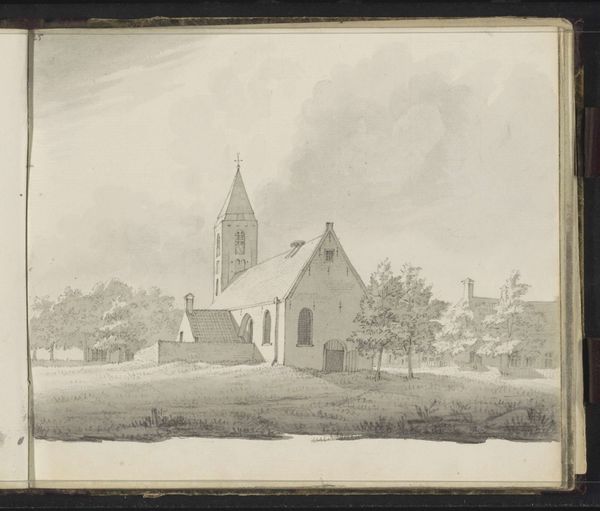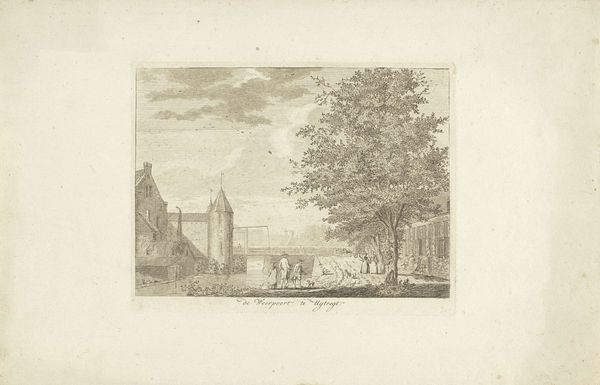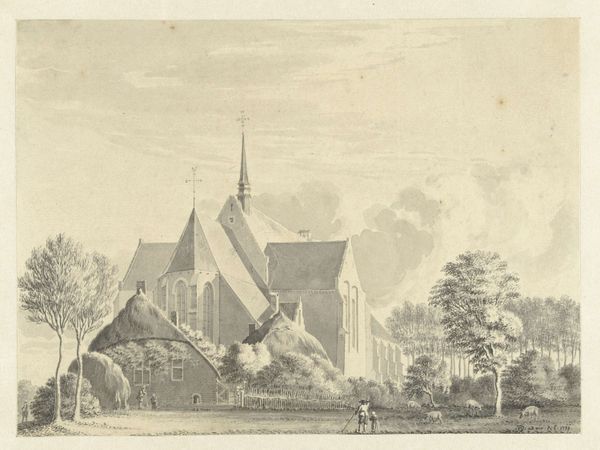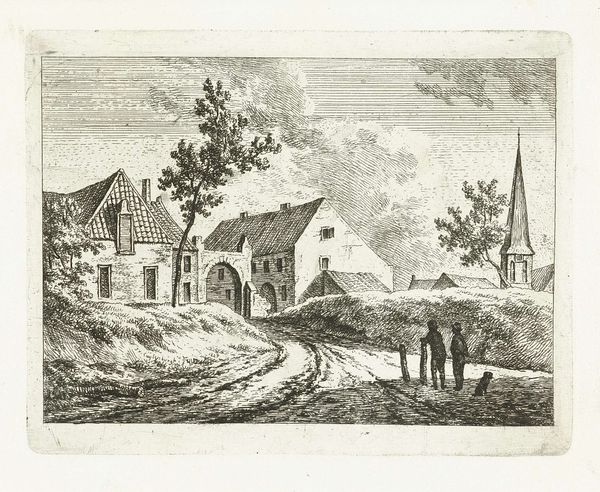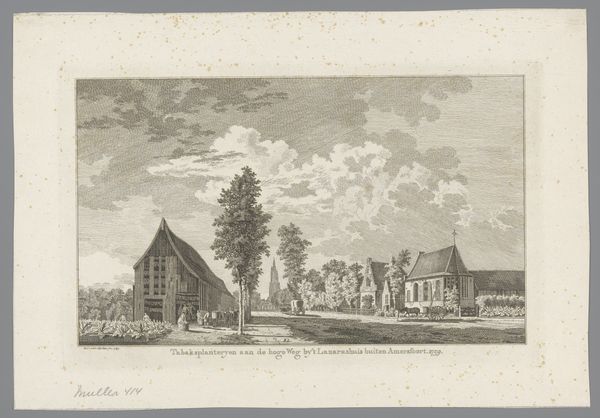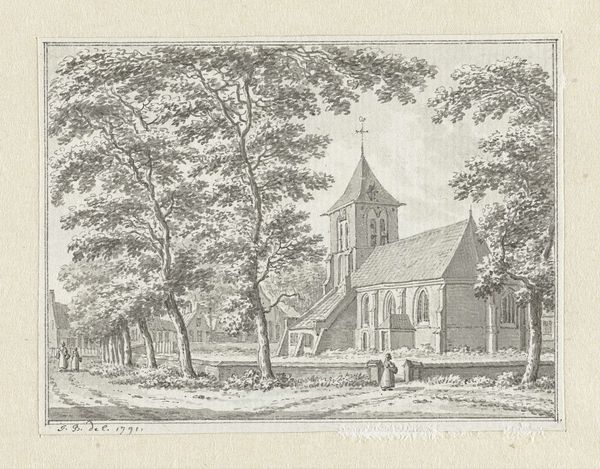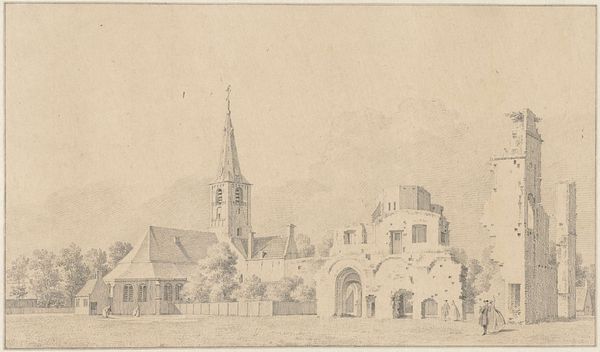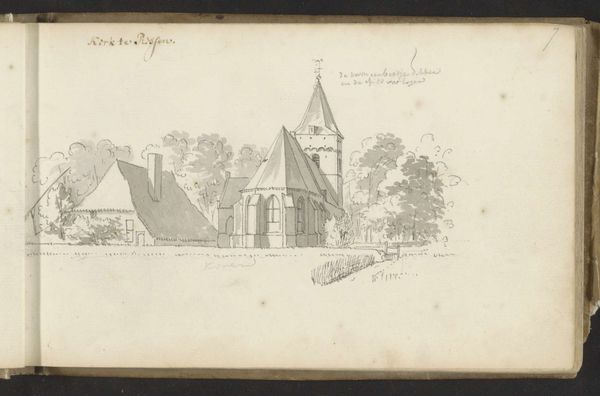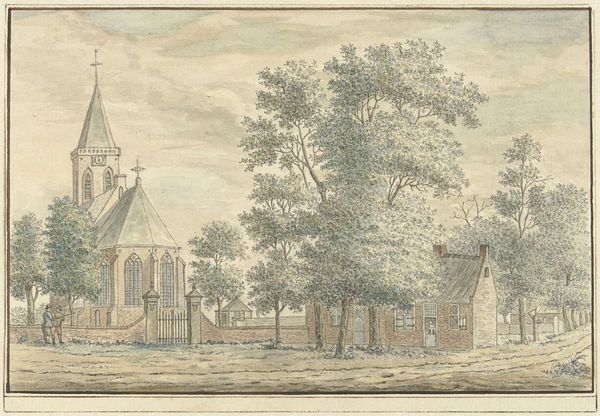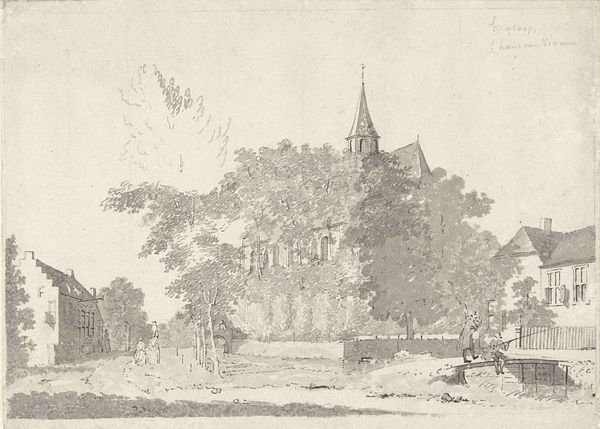
print, engraving
#
dutch-golden-age
# print
#
landscape
#
genre-painting
#
engraving
Dimensions: height 135 mm, width 190 mm
Copyright: Rijks Museum: Open Domain
Editor: So, this is “Gezicht op Hoevelaken,” a print by Hendrik Spilman from sometime between 1742 and 1784. It’s a lovely landscape, a rural village scene really, and it makes me wonder about the daily lives of the people depicted here. What details strike you about this piece? Curator: What I find interesting is the medium – an engraving. It’s a commercial process, think of printed news, cheap illustrations and widely distributed imagery. While we admire the fine lines and depiction of rural life, it's vital to remember that Spilman's work was reproducible, made in multiples. This pushes us to ask: who had access to such images, what determined the value placed on printed material, and who benefitted from this form of image circulation? Editor: That’s interesting, because I initially just focused on the aesthetic – the composition, the details. So you are saying its value exists beyond that because of how it was manufactured? Curator: Precisely. The artistic intention becomes entwined with the social and economic forces that shape its production and distribution. We need to understand the process by which this image became accessible to its contemporary viewers, and in what economic bracket they would be found. Can we read anything about wealth or its distribution within the work itself? Look at how labour is missing, this is not how everyone’s day looked. Editor: I see your point. By examining the materiality and process of engraving, you start unveiling layers of economic and social context that go beyond the simple depiction of a landscape. Curator: Absolutely. Thinking about art in terms of the material conditions surrounding its making helps us understand its broader impact and relevance. The choice of material and means of production always influences meaning, circulation and access to art. Editor: That’s given me a whole new perspective on how to approach art analysis, thank you. Curator: My pleasure, let's consider the power of printing and accessible art when we view the next piece.
Comments
No comments
Be the first to comment and join the conversation on the ultimate creative platform.

